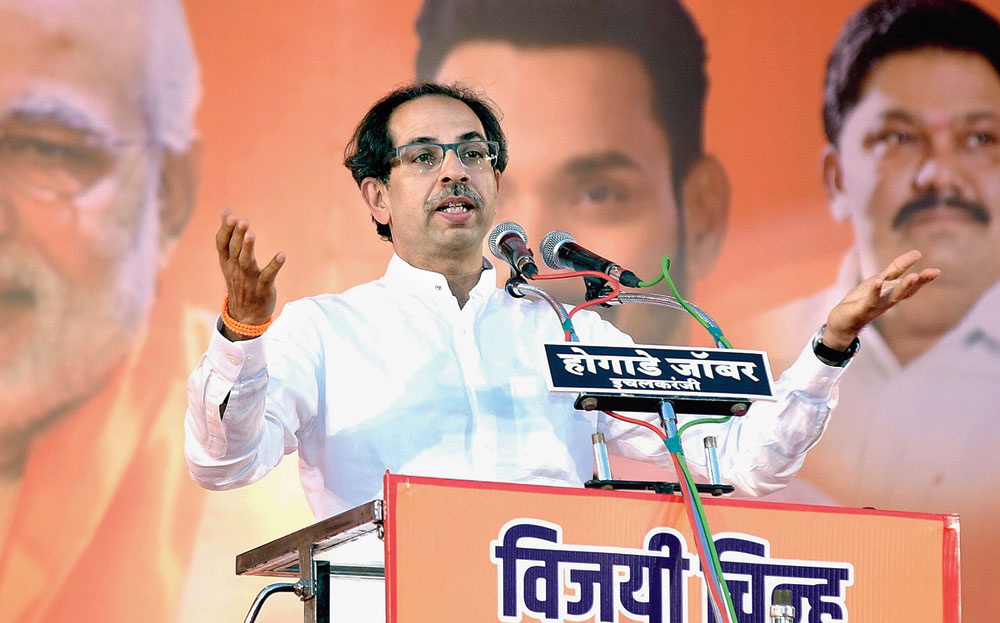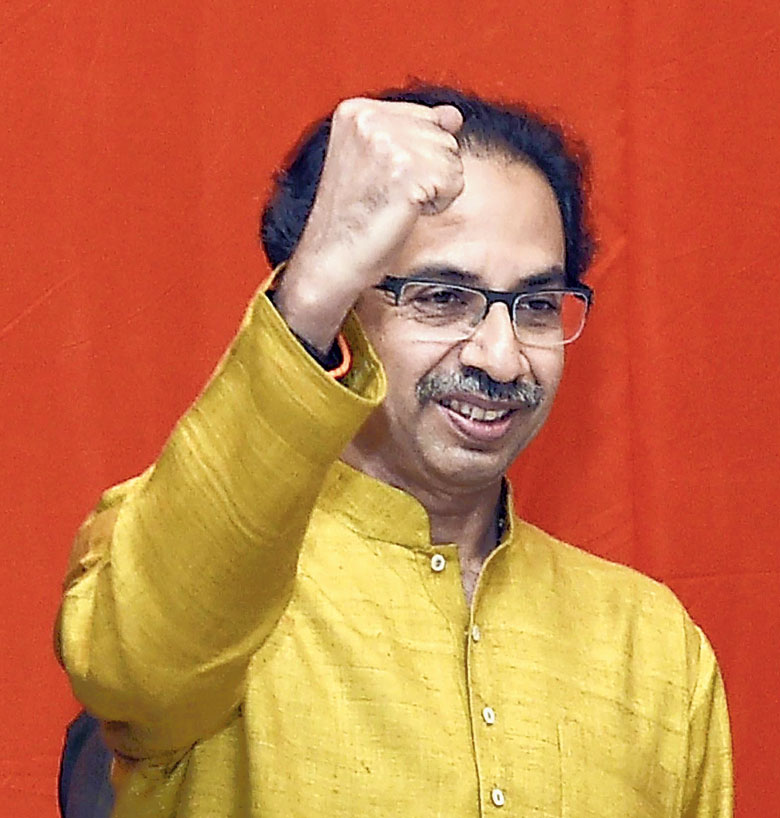Last Friday morning, the Shiv Sena shakha (branch) in Girgaon in south Mumbai was abuzz with discussion about campaigning but no local person was seen seeking help to address any problem.
Shakha pramukh Bala Ahirkar admitted that social service activities of the organisation have come down over the years. “Peoples’ response has come down over the years. Activities have come down,” Ahirkar said.
For an organisation that was created in 1966 by Balasaheb Thackeray with the objective of devoting 80 per cent of its activities to social service and 20 per cent to politics, the disconnect between the Sena and the local people is palpable.
The general public and intellectuals in Maharashtra believe that lack of clear direction, duplicitous politics and disconnect with people may cost the Sena dear in the elections. The party has forged an alliance with the BJP. It has fielded candidates on 23 seats in Maharashtra, while the BJP is contesting 25.
Mayor Bagul, an information-technology sector employee in Pune, said the Sena was on a downhill slope.
“Shiv Sena collaborated with the BJP for the 2014 general elections. They fought separately in the Assembly elections. They used abusive language against each other, particularly Shiv Sena. Now it has formed an alliance with the BJP again. This alliance is to seize power. People will not trust Sena,” Bagul said.
Rahul Vyawahare, a small trader engaged in the construction material business in Madha Tehsil under Solapur district, said the Sena’s alliance with the BJP had reduced its stature of being an aggressive front.
“Shiv Sena has been reduced from a tiger to a goat. The BJP will not eat the goat. It will keep the goat alive by giving grass and water,” Vyawahare said, alluding to the Sena’s emblem — a roaring tiger.
Pradeep Pachpinde, a Mumbai-based NGO employee, did his research as an MPhil student in Jawaharlal Nehru University in 1992 on the Sena. His thesis, “Shiv Sena in Maharashtra: A Case Study of Marathwada Region”, outlined the strategy of targeting certain groups under the garb of Marathi interest and Hindutva that Sena used under the leadership of Balasaheb Thackeray for almost three decades from 1970 to 2000.
The strategy of targeting was gradually losing support from the public when Thackeray Senior was leading the party. The “duplicitous politics” of Uddhav Thackeray added to the decline, Pachpinde said.
The Sena was formed to espouse the cause of son of the soil. Senior Thackeray highlighted the decline of Marathi-speaking people in then Bombay and started mobilising Marathi youths against domination of south Indians in the city.
The Sena expanded its base by starting shakhas in Mumbai localities where people came with complaints about their civic problems and got relief from authorities with the support of the Sena. It started a free ambulance service as well. Within no time, it became popular.
However, the organisation mainly based its politics by finding certain groups as its target. If south Indians in Mumbai were the first target, the Left-dominated trade unions soon came under its radar in 1980s, the thesis found.
Congress, the dominant political party of that time, gave tacit support to the Sena with the objective of sabotaging the Left-dominated trade union movement in textile mills. Leaders like Datta Samant and Madhu Dandavate were leaders of trade unions. Thackeray created a parallel union, Bharatiya Kamgar Sena, which negotiated with management to derail the movement of the Left groups.
He also fought for jobs for locals in organisations such as Bombay Port Trust. The Sena even started its cultural wing to promote Marathi films.
As it started spreading to the rural areas, Muslims and Dalits became its targets. The Sena was involved in the Bhiwandi riots in 1970. In 1986, the entry of the Sena in Aurangabad followed communal riots. In 1993, Sena activists were involved in spreading communal riots in Bombay, too. The Sena started playing the upper-caste-Hindu card to expand its base in many rural areas. Its actions in many ways resembled that of the RSS. Since 1985, the BMC, Mumbai’s civic body, has been continuously under the Shiv Sena.
“The strategic failure of Sena was that it never talked about higher studies for youths, rather focused more on low levels jobs for youths and violence,” Pachpinde said. “Many Marathi youths got killed. Wine shops, bars and gang war was the order of the day while people needed peace, prosperity and progress. People got aligned to the Congress, NCP and BJP.”
Balasaheb’s nephew Raj Thackeray came out of the Sena and the started his Maharashtra Navnirman Sena (MNS). However, the traditional voters are largely with the Shiv Sena while the youths are looking up to MNS as a more credible organisation, he said.
“In the last five years, Sena has lost its trust among people because of its duplicity politics. The BJP and Sena fought together in 2014 but they parted ways in the Assembly polls. The public witnessed a lot of bickering and acrimony between Sena and BJP till they again forged an alliance. Sena is seen as a directionless organisation,” Pachpinde said.
Political analyst Ajit Abhaynkar said the Sena’s performance will be the worst among the four leading parties in Maharashtra this election.
“Raj Thackeray is gradually emerging as the leader to occupy the space that Sena has been holding on to,” Abhaynkar said.
The buzz is that the Sena’s success this election may remain in the single digit. The candidates expected to have a better chance of winning are Chandrakant Khaire in Aurangabad, Sanjya Jadhav in Parbhani, Sanjay Mandlik in Kolhapur, Adhalarao Patil in Shirur, Gajanan Kirtikar in Mumbai North-West, Shrikant Shinde in Kalyan, and Rajan Vichare in Thane.












